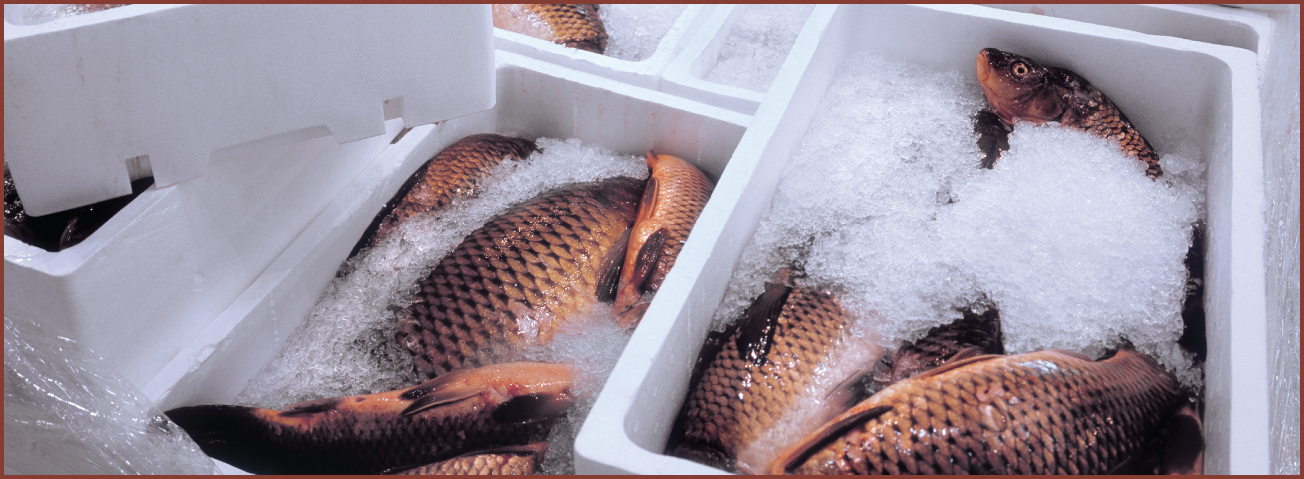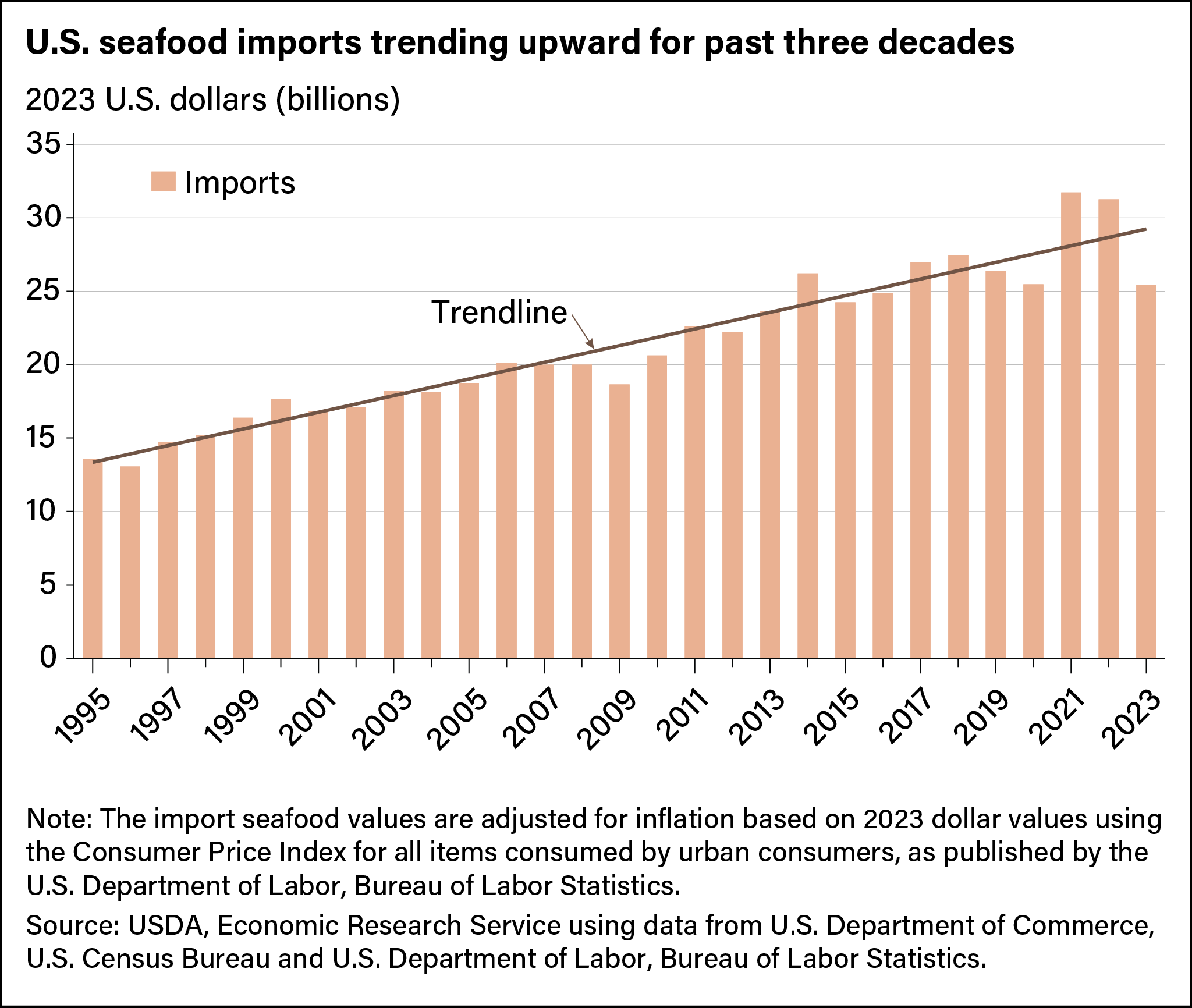
U.S. Seafood Imports Expand as Domestic Aquaculture Industry Repositions Itself
- by Christopher G. Davis and Caird E. Rexroad
- 5/22/2024
Aquaculture is the production of aquatic animals and plants under controlled conditions. Over the past two decades, the structure of the U.S. aquaculture industry has changed considerably, while U.S. demand for seafood has expanded. From 1998 to 2005, the number of U.S. aquaculture farms grew from 4,028 to 4,309, but sales of products from those farms, adjusted for inflation, decreased by 6.8 percent. From 2005 to 2013, the number of aquaculture farms fell to 3,096, but inflation-adjusted sales grew by 5 percent. The number of farms continued to decline, reaching 2,932 in 2018. However, sales by aquaculture farms from 2013 to 2018 grew almost 3 percent, reaching about $1.5 billion or about $1.8 billion in 2023 dollars.
Even as the number of U.S. aquaculture businesses and their production value fluctuated, consumer demand for seafood in the United States steadily grew. U.S. per capita consumption of fish and shellfish rose from 15.6 pounds in 2002 to 20.5 pounds in 2021, a 31-percent increase, according to the U.S. Department of Commerce, National Oceanic and Atmospheric Administration (NOAA).
Increased consumption has been supported, in part, by expanded U.S. seafood imports. From 1995 to 2023, U.S. imports of farm-raised and wild-caught fish and seafood have trended upward. Adjusted for inflation, the value of U.S. seafood imports expanded by 133 percent from 1995 to 2021 but fell 19.7 percent from 2021 to 2023. The total value of U.S. imported seafood in 2023 was $25.5 billion, with imports from Canada accounting for the largest share (14.1 percent), followed by Chile (13.0 percent), India (10.0 percent), Indonesia (7.9 percent), and Vietnam (6.4 percent). Canada, as the largest supplier, delivered more than $3.6 billion in seafood products to the United States in 2023.
Imports make up a significant share of the supply of seafood in the United States. According to NOAA Fisheries statistics, the United States imported more than 79 percent of the seafood consumed domestically in 2020. The value of imports exceeded exports in 2023, expanding the trade deficit in seafood to $20.3 billion. The increase in imports has put downward pressure on domestic seafood prices, limiting revenue for U.S. aquaculture operations.
More than 40 years ago, the National Aquaculture Act of 1980 provided Federal authority for supporting the development of aquaculture in the United States. Congress established provisions for a National Aquaculture Development Plan (NADP), first published in 1983, to support the U.S. aquaculture industry. In 2020, Executive Order 13921 called for an update to the NADP, and the National Science and Technology Council’s Subcommittee on Aquaculture announced three components of the updated plan: the National Strategic Plan for Aquaculture Research, the Strategic Plan to Enhance Regulatory Efficiency in Aquaculture, and the Strategic Plan for Aquaculture Economic Development. The strategic plans for research and regulatory efficiency were published in 2022; the plan for economic development is still in progress and being updated, along with an introduction providing a broad overview of Federal agency activities related to aquaculture.
This article is drawn from:
- Aquaculture. (n.d.). U.S. Department of Agriculture, Economic Research Service.
- Census of Aquaculture. (2024). U.S. Department of Agriculture, National Agricultural Statistics Service.
- Federal town hall breakout session summary. (2023). U.S. Department of Agriculture, Subcommittee on Aquaculture.
You may also like:
- What is aquaculture?. (2023). U.S. Department of Commerce, National Oceanic and Atmospheric Administration.
- Aquaculture is agriculture: USDA’s role in supporting farmers of fish and shellfish. (2020). U.S. Department of Agriculture.


